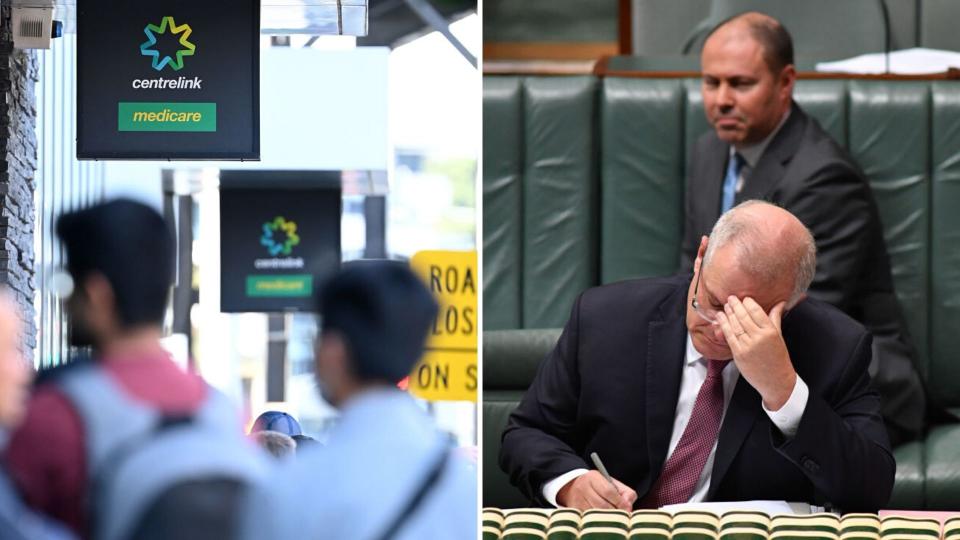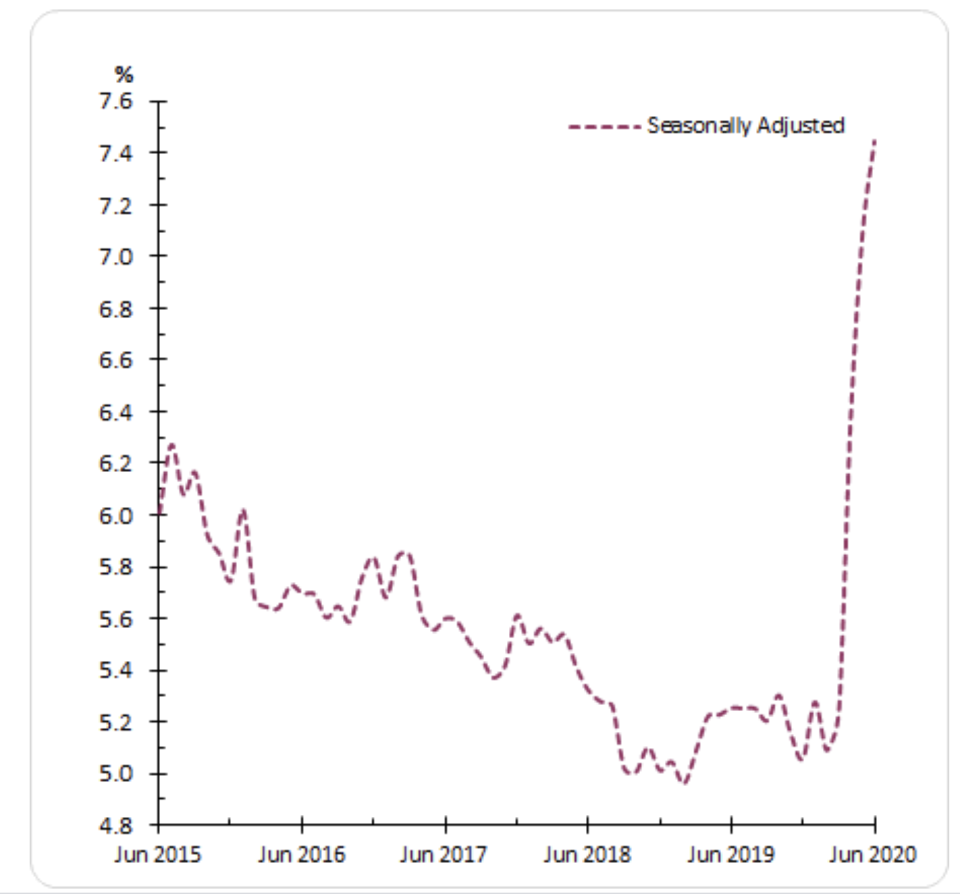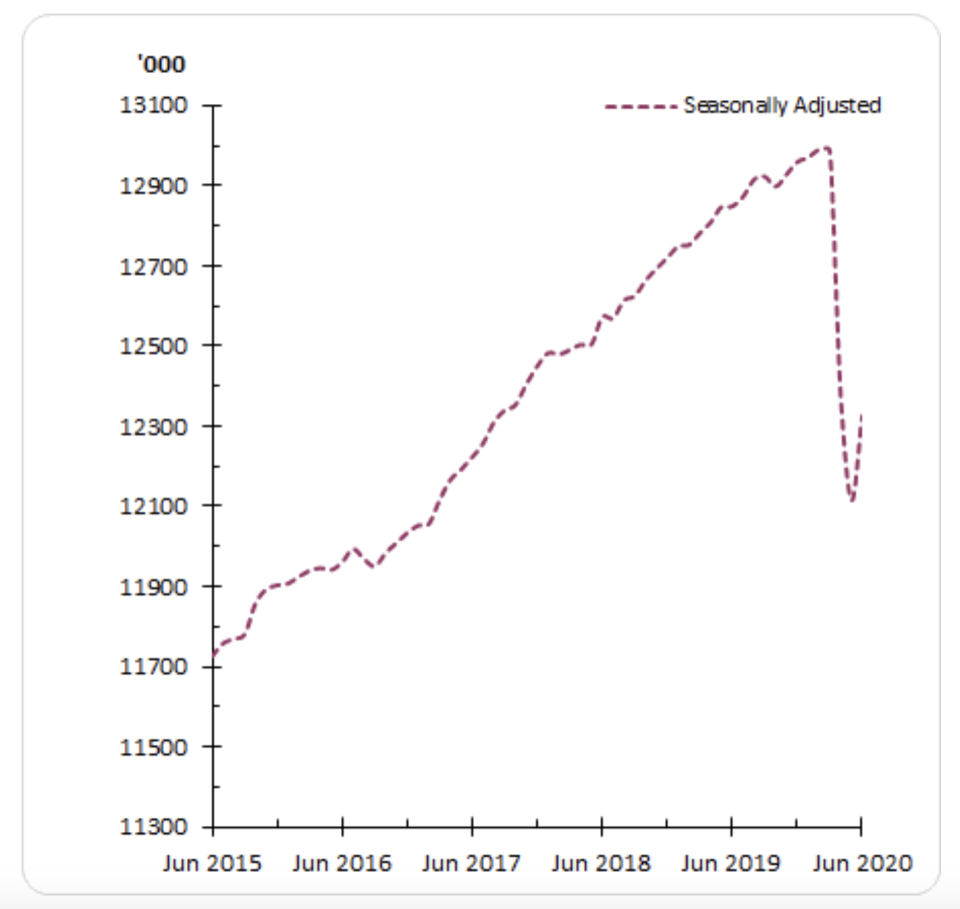Unemployment hits new high as nearly 1 million jobless

The Australian unemployment rate has hit 7.4 per cent, after 69,300 people lost their jobs in June.
The June figures mark an increase of 0.3 percentage points on the May unemployment rate, with 992,300 people now considered unemployed.
Also read: How there could be 395 million more jobs in the next decade
Also read: Aussie postcodes most at risk from JobKeeper deadline
Also read: Jobless rate will hit property – but not how you might expect
This takes it to the highest unemployment rate since November 1998, despite a surge in the number of people participating in the labour force.
The head of labour statistics at the Australian Bureau of Statistics, Bjorn Jarvis was upbeat about the figures, noting that an extra 280,000 people were in the labour force and looking for work since May. This followed a loss of 874,700 jobs between March and May.
“In June, around 24 per cent of the fall in employment through to May had been regained,” Jarvis said.
He noted that the majority of the increase was in part-time workers (249,000 people), while there was a fall in full-time employment of 38,100 people.
Compared to last year, there are 306,800 fewer people employed full time and 215,500 fewer employed part time.
It comes after stark May jobs figures, which reflected 227,700 people losing work over that month, taking the unemployment rate to a 19-year high. And it follows April, which saw 594,300 Australians lose work.
Unemployment rate

Employed Australians

‘Fighting back’: Morrison hopeful but cautious
Speaking following the release of the figures, Morrison said the 210,800 increase in new jobs shows the “Australian economy is fighting back”.
However, he warned that July will likely be bleak.
"The jobs lost – Australians depend on that fight and the incomes depend on that fight and we are in it and we are making progress,” Morrison said.
"In July, I expect we will see impact from Victoria but of what it has demonstrated in June is that as Australia has opened up again, as people have gone back into their businesses and opened their doors."
Morrison also noted that 60 per cent of new jobs were for women and 50 per cent for youth.
“Underemployment has fallen and we've seen an improvement in hours,” he said.
“What I'm encouraged by about that is the flexibility we've seen in the labour force has meant that it's been able to keep people in jobs, maybe not as many hours as they once had but they are still in jobs.”
AMP Capital chief economist Shane Oliver agreed the figures were better than expected.
He told Yahoo Finance the numbers mean around 24 per cent of the jobs lost going into May have been regained.
“However, workforce participation rose as some of those who gave up looking for work started to look for jobs again (possibly in order to retain JobSeeker as the mutual obligation to look for a job returned last month) and this pushed unemployment up to 7.4 per cent,” he explained.
But, he added, if the unemployment rate is adjusted again for those who are employed but working zero hours, including those on JobKeeper, the effective unemployment rate would be at 11.7 per cent.
“The good news though is that this is still well down from around 13.6 per cent in May and 14.8 per cent per cent in April. At least it’s going in the right direction.”
J.P. Morgan Asset Management global markets strategist Kerrie Craig noted that the 210,000 jobs gained was driven entirely by part time employment.
While not “optimal”, he said it does reflect an economy “getting back on its feet”.
“The number of jobs gained was decent, but so too was the rise in the participation rate. As the lock-down ended in many states, workers have re-entered the labour force as they seek jobs, pushing the unemployment rate higher,” he said.
“More notable is that broader measures of the health of the labour market – underemployment and underutilisation – improved.”
Craig said those metrics show Australians are working closer to their normal hours, or no longer working zero hours.
“Broadly these trends should continue in the months ahead, albeit with state level differences given the level three restrictions in place in Melbourne, as the participation rate rises along with jobs gained. Overall, this should keep the unemployment rate moving higher,” he said.
“But it will be other metrics of the labour market and the growth in hours worked that become more important for thinking about household incomes as will any tapering of the JobKeeper program that is announced next week.”
True figure could be higher
Treasurer Josh Frydenberg agreed the real unemployment figures are likely to be higher, speaking prior to the release. He said the number of Australians not in work is closer to 13 per cent once those supported by JobKeeper but working zero hours, and those unemployed but not looking for work is taken into account.
The bleak data comes after the government announced a $2.5 billion skills and training scheme, designed to help apprentices, school-leavers and the newly unemployed train up for jobs of the future.
The scheme includes expanded wage subsidies for up to 180,000 apprentices, and cheap courses for 350,000 students.
Also read: ‘Devastating truth’ behind youth unemployment in Australia
Also read: ‘Scary’: What Gen Z should do when the economy tanks
Also read: Recession deals $32,000 blow to young Australians
"Covid-19 is unprecedented but I want Australians to be ready for the sorts of jobs that will come as we build back and recover," Prime Minister Scott Morrison said.
"The jobs and skills we'll need as we come out of the crisis are not likely to be the same as those that were lost."
Victoria is currently battling a spike in cases which has forced Melbourne into a six-week lockdown.
Frydenberg has warned the lockdown will cost as much as $1 billion to the Australian economy a week.
He will present a mid-year economic and financial outlook next Thursday 23 July, in which he is expected to share details on the future of the JobKeeper and JobSeeker schemes.
Deputy Labor leader Richard Marles on Thursday morning said the jobs figures were worrying, and presented further signs the government needs to wind back JobKeeper and JobSeeker with great caution.
“Whatever they show today it is clear that the effective jobless rate is much higher. We’re going through a jobs crisis here,” he told Sky News.
“If you withdraw government support at a faster rate than the private sector is able to recover, then what you end up doing is engendering a further deepening of the recession.”
Want to take control of your finances and your future? Join the Women’s Money Movement on LinkedIn and follow Yahoo Finance Australia on Facebook, Twitter and Instagram.



